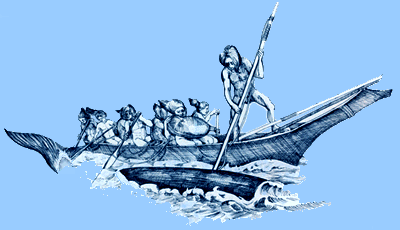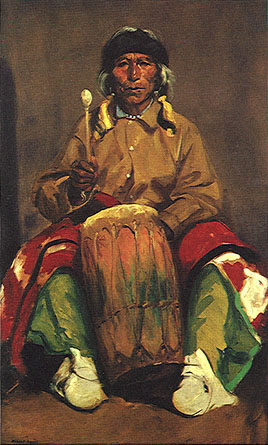WELCOME TO MY HOME PAGE
SKEENA COUNTRY
This page is dedicated to the
heritage of our adopted children, Melvin, Ian and Melanie, who
have brought us great blessing and joy. Their people are
the Kwakiutl (Kwagiulth) people, who inhabit the northern end of
Vancouver Island, in beautiful British Columbia, Canada.
The northern arm then extends up through the Douglas Channel to
Kitamaat Village. Kitimaat means "people of the
snow". I hope you enjoy your visit!
HISTORY OF KWAKWAKA'WAKW
PEOPLE

The Kwakwaka'wakw people occupied the northern corner of Vancouver Island, British Columbia, from Johnstone Strait to Cape Cook, and the mainland coast from Douglas Channel to Bute Inlet, except a small portion controlled by the Bella Coola. The material culture of these coastal people relied mainly on heavy shoals of salmon that spawned the many creeks and rivers each year. They also relied heavily on the abundant stands of free grained cedar trees. The salmon was their food source for the year and the cedar provided timber for dwellings, canoes and household utensils. Even the bark was able to be used for clothing and mats.
The coast of British Columbia is a maze of inlets, fjords, bays and islands. It is along these waterways that Canada's First Peoples lived, traveled and traded with other Coastal Tribes. The area is rich in history and culture of the different Coastal Nations.
When Europeans arrived in the 1770s, there were at least fifteen languages spoken on the coast, belonging to the five distinct language families. Every region had its own languages, traditions and distinctive identities. Many of these dialects are lost or no longer spoken, but attempts are being made to preserve the surviving languages before they too, disappear.
 The area in red shows the Kwakwaka'wakw
Nation
The area in red shows the Kwakwaka'wakw
Nation
CANOES

The coastal peoples' canoes
were carved and cut from large red cedar trees which were of a
straight grain. Canoes were of different sizes ranging from
smaller fishing and sealing crafts to large seagoing vessels that
carried whalers beyond the sight of land. Today, the canoe
has of course been replaced by the "motorized plant
boats", but many First Peoples of the Pacific Coast now use
the canoe in cultural festivals. The West Coast style canoe
was largely used on Vancouver Island, British
Columbia. It is a graceful craft with the bow carved
to suggest the head of an animal, and it sweeps upwards in a
gentle curve from the bottom of the flattened hull to the
prow. The stern is nearly vertical with a small, elevated
platform. The West Coast style canoe are well designed and
well suited for travel on the open sea.
NATIVE GROUPS

Canada's First Nations number just over one
million people (about 4% of the overall population) and live in
virtually all areas of the country. There are 11 separate
language families, which make up 53 spoken, distinct indigenous
languages. There are seven major culture areas:
Algonikian (Easter and Central Woodlands), Iroquoian
(Southeastern Ontario), MacKenzie River (MacKenzie River system
and woodlands north of the Churchill River), Plains (Canadian
prairies), Plateau (interior plateau of British Columbia and
Yukon), Pacific Coast (coast of British
columbia) and Arctic (Yukon, Northwest Territories, Quebec,
Labrador). The Kwakwaka'wakw (Kwakiutl) are part of the Pacific
Coast people.
A LINE IN THE SAND

Seagull by Sue Coleman
Cultural property includes not only land and
other tangible property, but ideas, traditions, and other non
tangibles. Cultural property belongs to the cultural group,
rather than to an individual. As an individual has the
right to control use of his/her property, the cultural group has
the right to control the use of its property. Not all
people recognize cultural property. As a result some
individuals will use another group's cultural properties without
permission; often that use is offensive to the cultural group,
because their property is used in a way that distorts or is
disrespectful to the group's beliefs. Author
Unknown
